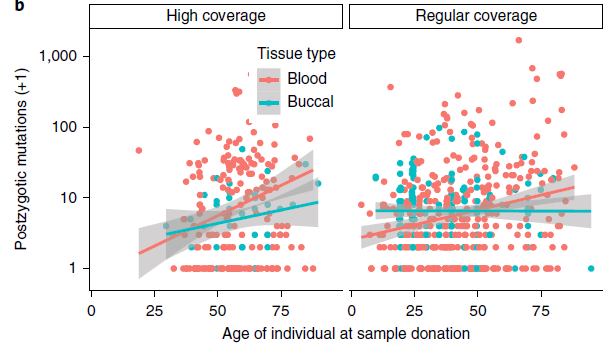
Remember when the Broad Institute discovered polygenic scores? Now it seems as if they invented quantitative genetics.
See below for a thread. (Happy if someone could send me the full text.)
1/7
ahajournals.org/doi/abs/10.116…
See below for a thread. (Happy if someone could send me the full text.)
1/7
ahajournals.org/doi/abs/10.116…
The most remarkable "discovery" is this: the correlation between the (CAD) polygenic scores of siblings is 0.5. And that between second-degree relatives is 0.25.
As much as I know, this result is over 100 years old.
genetics.org/content/211/4/…
2/7
As much as I know, this result is over 100 years old.
genetics.org/content/211/4/…
2/7

The next experiment is less trivial. They asked: if one sib has PRS in the top 20%, what is the probability of the other sib to also have PRS in the top 20%?
3/7
3/7

Their result was 44%. Here is an R code that provides the same answer:
risk_sib = function(q) {
integrand = function(t)
return(dnorm(t)*pnorm(qnorm(1-q)*sqrt(2)-t, lower.tail=F)^2/q)
return(integrate(integrand,-Inf,Inf)$value)
}
4/7
risk_sib = function(q) {
integrand = function(t)
return(dnorm(t)*pnorm(qnorm(1-q)*sqrt(2)-t, lower.tail=F)^2/q)
return(integrate(integrand,-Inf,Inf)$value)
}
4/7

To be fair:
(1) It took a few lines to sketch the proof. See the Supplement our preprint biorxiv.org/content/10.110…
(2) This formula was somewhat off for the top 1% (predicting 13% instead of 21%) - perhaps the distribution deviates from normality in the tail.
5/7
(1) It took a few lines to sketch the proof. See the Supplement our preprint biorxiv.org/content/10.110…
(2) This formula was somewhat off for the top 1% (predicting 13% instead of 21%) - perhaps the distribution deviates from normality in the tail.
5/7
Next they determined whether the PRS can identify which sib is affected in discordant sib-pairs. This is important, but there's already some literature on this, most notably nature.com/articles/s4159…
6/7
6/7
These results interests me, as they have implications to the utility of screening IVF embryos with PRS. The paper seems to have cited our previous work on the subject, to which I'm honored.
Curious what the rest of the paper looks like.
7/7
Curious what the rest of the paper looks like.
7/7
Thanks @adamkvonend for sending the paper. There was not much beyond the first page. But the figure with the full data is interesting. The setting where my little R snippet was off is an outlier, so I actually did pretty well.
8/10
8/10

My predictions for the risk of one sib to have a PRS above a threshold (1,5,10, or 20% percentile), given that the other sib has crossed the threshold, were 12.9%, 24.4%, 32.4%, and 43.6%. (Independent of the score.) Quite close to the actual data!
9/10
9/10

That said, the problem of the utility of cascade screening after PRS testing is really interesting. It can be further developed. E.g., I think what is important is the probability that a sibling of the proband will be affected given a high PRS in the proband.
10/10
10/10
• • •
Missing some Tweet in this thread? You can try to
force a refresh









